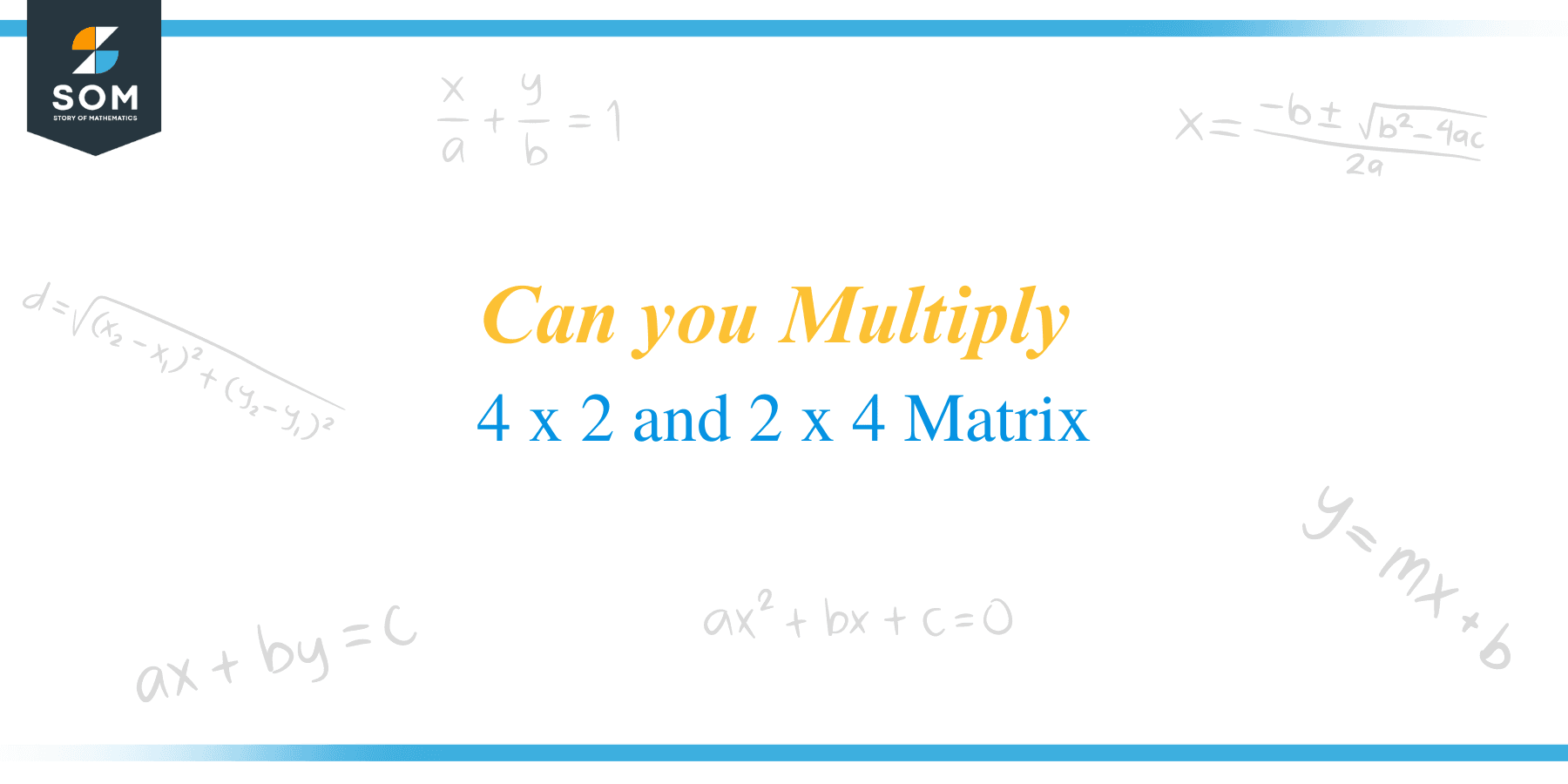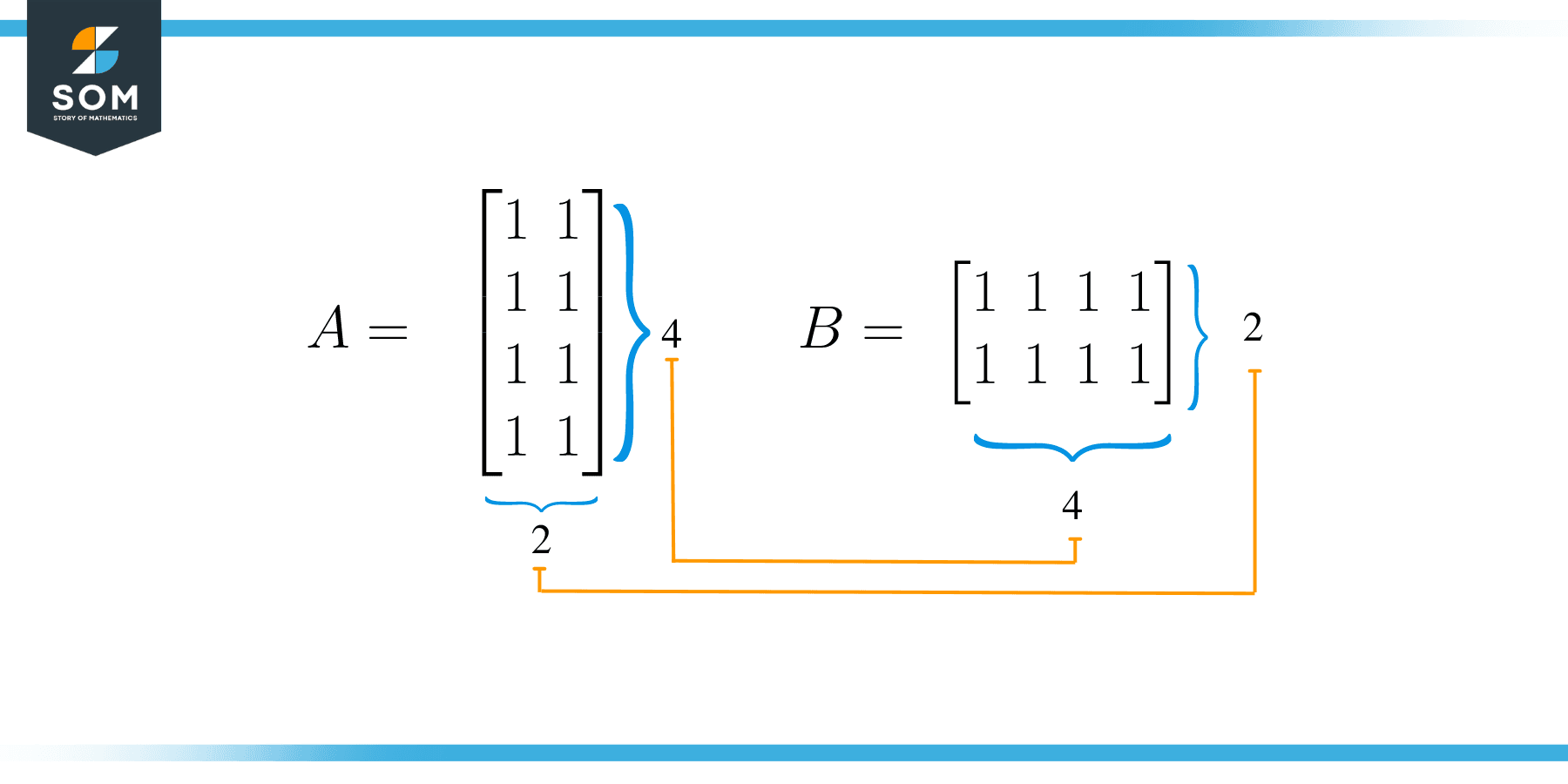JUMP TO TOPIC
 It is possible to multiply a $4\times 2$ and a $2\times4$ matrix, and the resulting matrix will be a $4\times4$ matrix. In mathematics, a matrix refers to a rectangular arrangement or numbers table, expressions, or symbols arranged in columns and rows.
It is possible to multiply a $4\times 2$ and a $2\times4$ matrix, and the resulting matrix will be a $4\times4$ matrix. In mathematics, a matrix refers to a rectangular arrangement or numbers table, expressions, or symbols arranged in columns and rows.
On matrices, you can carry out different operations — for instance: addition, subtraction, multiplication, and so on. In this complete guide, you will discover how to multiply a matrix by some other matrix, its technique, method, and detailed instances of $4\times 2$ and $2\times 4$ matrix multiplication, so let’s get to it!
How Do You Multiply a $4 \times 2$ And a $2 \times 4$ Matrix?
You can multiply two or even more matrices in the same way that two or so more real numbers could be multiplied. Matrix multiplication is mainly divided into two types: scalar matrix multiplication, where a single number is multiplied by every matrix element, and the second one is vector-matrix multiplication, in which the whole matrix is multiplied by the other matrix.
Multiplication of matrices is referred to a binary operation in mathematics that creates a matrix from two matrices. It is most commonly used in linear algebra. The amount of columns in the first matrix should be equal to the number of rows in the second matrix to carry out matrix multiplication. The matrix product will be a resulting matrix and will have the first matrix’s number of rows and the second matrix’s number of columns.
Mathematically, if the amount of columns in matrix $A$ equals the number of rows in matrix $B$, the product of the two matrices $A$ and $B$ will be defined. More generally, let $A$ be an $m \times n$ matrix, where $m$ is the amount of rows and $n$ is the amount of columns of $A$, and $B$ be an $n \times p$ matrix, where $n$ is the number of rows and $p$ is the number of columns of $B$. Then the product of both the matrices is a matrix $C$ having order $m \times p$. You can show the multiplication of $4 \times 2$ and $2 \times 4$ matrices by looking at an example.
Example
Let $A$ be a $4\times2$ matrix and $B$ be a $2\times4$ matrix. Define both the matrices as follows:
$A=\begin{bmatrix}1&2\\4&3\\0&9\\2&5\end{bmatrix}$ and $B=\begin{bmatrix}0&2&4&1\\6&3&5&0\end{bmatrix}$
Suppose that $C$ is a resulting matrix that will be obtained by the multiplication of $A$ and $B$. Mathematically, $C=AB$ will be a $4 \times 4$ matrix. Let’s multiply $A$ and $B$ to see what matrix $C$ will look like.
$C=\begin{bmatrix}1&2\\4&3\\0&9\\2&5\end{bmatrix}\begin{bmatrix}0&2&4&1\\6&3&5&0\end{bmatrix}$
$C=\begin{bmatrix}1\times 0+2\times 6 & 1\times 2+2\times 3 & 1 \times 4 +2\times 5 & 1\times 1+2\times 0\\4 \times 0+3\times 6 & 4 \times 2+3 \times 3 & 4 \times 4+3\times 5 & 4 \times 1 + 3 \times 0\\0 \times 0 + 9\times 6 & 0 \times 2+9 \times3 & 0 \times 4+9 \times 5 & 0 \times 1+9 \times 0\\2\times0+5 \times 6&2\times2+5\times3 & 2 \times 4+5 \times 5 & 2\times 1+5\times 0\end{bmatrix}$
$C=\begin{bmatrix} 0+ 12 & 2+ 6 & 4 + 10 & 1+ 0\\ 0 + 18 & 8 + 9 & 16 + 15 & 4 + 0\\ 0 + 54 & 0 + 27 & 0 + 45 & 0 + 0\\ 0+ 30 & 4 + 15 & 8 + 25 & 2 + 0\end{bmatrix}$
$C=\begin{bmatrix} 12 & 8 & 14 & 1\\ 18 & 17 & 31 & 4\\ 54 & 27 & 45 & 0\\ 30 & 19 & 33 & 2\end{bmatrix}$
From the above steps, you can see that $C$ is a $4\times 4$ matrix.
Finding the Determinant of a $2\times4$ Matrix
A matrix’s determinant is a scalar quantity calculated for a given square matrix. A square matrix has the same number of rows as columns. The determinant, in particular, will be nonzero if and only if the matrix is invertible. Because a $2\times4$ matrix has two rows and four columns, it is not a square matrix, and its determinant cannot be determined.
Conclusion
We’ve gone over a lot of ground in terms of how to multiply two matrices with different dimensions. Let’s summarize what you have learned so far:
- Multiplication of $4\times2$ and $2\times4$ matrices is possible and the result matrix is a $4\times4$ matrix.
- A square matrix is one having the same number of rows and columns.
- $2\times4$ is not a square matrix.
- It is not possible to find the determinant of the $2\times4$ matrix.
- The determinant of a matrix is referred to as a scalar quantity.
The product of two or more matrices is easier to find. Matrices are widely used in economics, engineering, statistics, and physics, as well as in many branches of mathematics, so why not take some examples of the matrices having different dimensions and multiply them to see the interesting results their product will produce?
